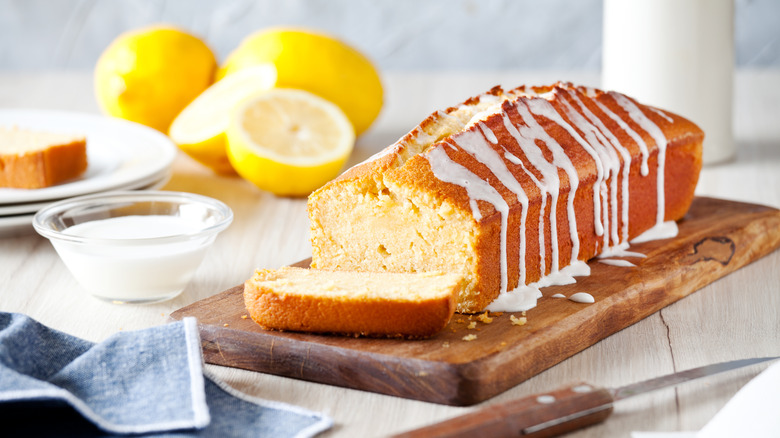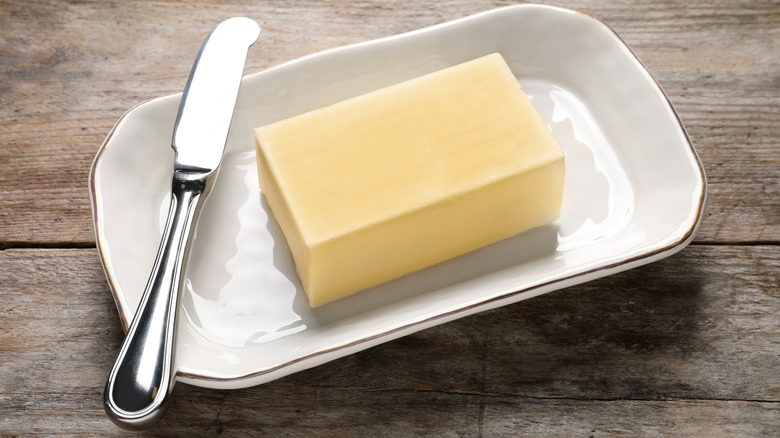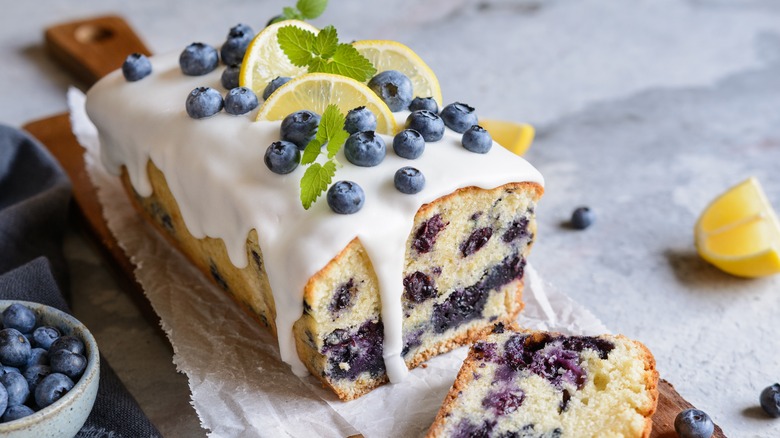Why A Butter Knife Is Key For An Extra Flavorful Pound Cake
If you enjoy shows like "Cake Boss" or "The Great British Baking Show" then you might think that a good dessert has to be big, flashy, and probably have something made of fondant on it. There can still be beauty in simplicity though, and there is no better example of this than the classic, buttery pound cake.
The pound cake got its name from its original recipe which called for a pound of each of the main ingredients. This made it a simple, filling, and satisfying recipe that could easily be shared. Over the years, the ratio of ingredients was altered to make a smaller, lighter cake, but one that didn't skip out on any of the original's flavor.
While the recipe is simple, the decoration doesn't have to be. If you want to wrap the whole thing in fondant, you can do that. If you want to leave it plain, that works too, but you could also add some fresh fruits, frosting, whipped cream, or lemon curd. One great way to dress up a pound cake and add tons of flavor is top the cake with a glaze using a butter knife.
How to infuse flavor with just a butter knife
Conventional wisdom might tell you that it's a bad idea to poke your cake full of holes while it's fresh out of the oven, but it's actually one of the easiest ways to inject your pound cake with flavor.
Putting thin, near-invisible slits into your pound cake with a butter knife before you add your glaze lets it flavor the inside of the cake as much as the outside. Instead of simply coating the exterior, the glaze trickles into your freshly baked cake and brings tons of flavor with it.
Normally, you want to wait until your cake has cooled before you add a glaze, but if you're taking this extra step it's best to do it while it's still warm. Glazing a warm cake makes your glaze runny, but in this case, that's exactly what we want. If the glaze sets instantly, it won't make its way into the cake properly, and you might as well have skipped poking the holes in the first place.
Instead, poke holes in your cake once it comes out of the oven. Pour the glaze over top, and then poke a few more holes to ensure that the glaze is making its way inside. It helps to also free the cake from the sides of the pans a little bit so the glaze makes its way down the sides as well.
Different types of pound cake glazes
For this method, it's best to use a glaze that will be nice and runny. America's Test Kitchen recommends a simple mixture of sugar and lemon juice that will add tons of citrus-sweet flavor to the interior of the cake.
You can also try something a little heavier, but there's no guarantee that it will permeate into the cake easily. A simple glaze made with butter, powdered sugar, heavy cream or milk, and a flavored extract will provide more body for your glaze, and resemble a classic icing instead of a shiny glaze. The extract is also easy to swap out, so you can try a wide variety of flavors. Stick with citrus and use orange essence, try out vanilla extract, or go nutty with almond extract instead.
If you want to go even richer, you can try out a cream cheese glaze. This adds a creamy tang to the classic glaze, though it's likely too thick to permeate through the subtle cuts from the butter knife.


